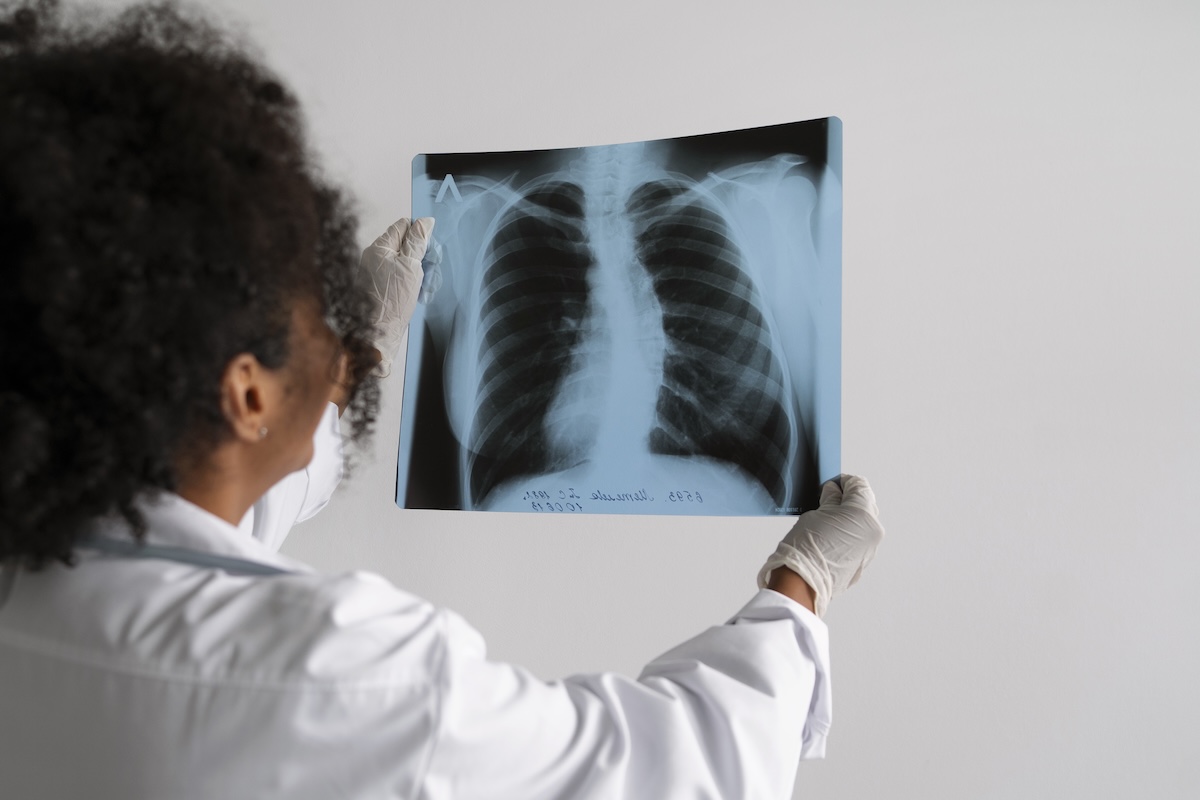Lung cancer is a disease where cells in the lungs grow in an uncontrolled way. These cells can form tumors that make it hard for your lungs to work properly. In some cases, the cancer can spread to other parts of the body. This makes it more difficult to treat if it isn’t caught early.

Lung cancer mostly starts in the cells that line your airways. These cells normally grow and divide in a healthy, controlled way. But when they become cancerous, they multiply too fast and don’t stop. Over time, this creates a tumor that can block airways and damage healthy lung tissue.
Early diagnosis is very important because treatment works best when lung cancer is found in its early stages.
What Causes Lung Cancer and Which Types Exist?
The main cause of lung cancer is smoking. Cigarettes contain harmful chemicals that damage the lungs over time. Even if you quit smoking years ago, your risk may still be higher than someone who never smoked. People who breathe in secondhand smoke are also at risk.
Other causes include long-term exposure to air pollution, radon gas, asbestos, and certain chemicals used in workplaces. Some people also have a higher risk because of family history or specific gene changes passed down from relatives.
There are two main types of lung cancer:
-
Non-small cell lung cancer (NSCLC) – This is the most common type. It grows more slowly and is often easier to treat if found early. Subtypes include adenocarcinoma and squamous cell carcinoma.
-
Small cell lung cancer (SCLC) – This type is less common but spreads more quickly. It is strongly linked to smoking and is often diagnosed at a more advanced stage.
Knowing which type you have helps your doctor decide which treatment will work best for you.
Common Symptoms of Lung Cancer
Lung cancer might not cause symptoms in its early stages. That’s why it’s often found later, after it has already started to spread. But when symptoms do appear, they can include:
-
A cough that doesn’t go away or gets worse over time
-
Chest pain that feels sharp or gets worse when you breathe deeply or cough
-
Coughing up blood or rust-colored mucus
-
Shortness of breath, especially during daily activities
-
Hoarseness or a change in your voice
-
Feeling very tired or weak
-
Losing weight without trying
-
Loss of appetite
-
Repeated infections like pneumonia or bronchitis
Some people may also have swelling in their neck or face, or pain in their bones if the cancer has spread. If you notice any of these symptoms that don’t go away, talk to your doctor—especially if you’re a current or former smoker.
How Doctors Diagnose Lung Cancer
To figure out if you have lung cancer, a doctor will start by asking about your symptoms and medical history. If you’ve smoked or been exposed to harmful chemicals, they’ll want to know that too. After a physical exam, your doctor might order a chest X-ray or CT scan to look for unusual spots in your lungs.
If a problem is found, more tests will follow. These might include:
-
A sputum test to look for cancer cells in mucus
-
A bronchoscopy to check your airways and take a small tissue sample
-
A biopsy using a needle or surgery to remove a piece of tissue for testing
-
Blood tests and imaging scans to check if the cancer has spread
Once a diagnosis is confirmed, the doctor will also “stage” the cancer. This means they’ll find out how big it is and whether it has spread to other parts of the body. The stage helps guide your treatment plan.
Treatment Options for Lung Cancer
Lung cancer treatment depends on the type of cancer, how far it has spread, your overall health, and your personal preferences. Your doctor will work with you to choose the best plan. Treatments may include one or more of the following:
-
Surgery – If the cancer is found early, surgery might remove just part of the lung or the entire lung to get rid of the tumor.
-
Radiation therapy – This treatment uses high-energy beams to kill cancer cells. It can be used before or after surgery, or as the main treatment if surgery isn’t an option.
-
Chemotherapy – These are strong medicines that kill cancer cells or stop them from growing. Chemotherapy is often used when the cancer has spread or comes back after treatment.
-
Targeted therapy – If your cancer has certain gene changes, drugs can be used to block the signals that help cancer cells grow. These treatments usually have fewer side effects than traditional chemotherapy.
-
Immunotherapy – This helps your body’s immune system find and destroy cancer cells. It can be helpful for certain types of advanced lung cancer.
-
Palliative care – This is not a cure, but it helps you feel better by managing pain, breathing problems, or other symptoms, especially in later stages of the disease.
Sometimes a combination of treatments works best. You may have surgery followed by chemotherapy or radiation. Or you might start with chemotherapy and switch to targeted therapy or immunotherapy if it works better for your type of cancer.
Living With Lung Cancer
Getting a lung cancer diagnosis can be frightening, but there are many resources and treatments available to help you cope. Some people respond well to treatment and live many years after diagnosis. Others may focus on improving their comfort and quality of life.
A strong support system—including family, friends, doctors, and counselors—can help you through the challenges. Eating well, getting enough rest, and staying as active as you can also make a big difference.
If you’re at risk for lung cancer or have had symptoms that don’t go away, don’t wait to see a doctor. Catching lung cancer early can lead to better treatment results and a greater chance of recovery.

